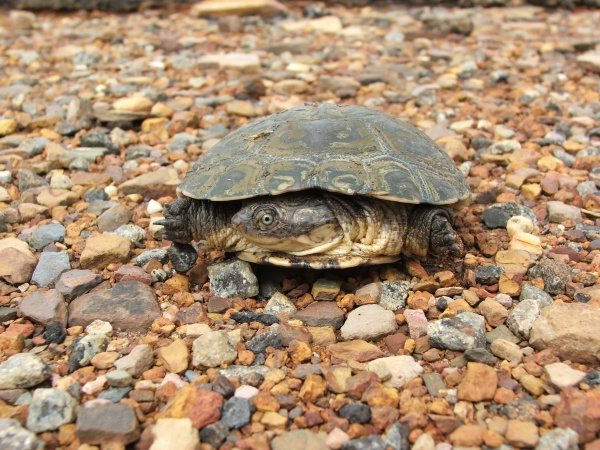Facts About Helmeted Turtle
The African helmeted turtle, also known as the marsh terrapin, crocodile turtle, or African side-necked turtle, is a remarkable species found in freshwater habitats across Sub-Saharan Africa and southern Yemen. These turtles are relatively small, with a carapace that ranges in color from black to brown. One way to distinguish males from females is by examining their tails: males have long, thick tails, while females have shorter ones.
Unlike some other turtles, the African helmeted turtle lacks a hinged plastron, which is the part of the shell that covers its belly. This unique feature enables them to right themselves if they end up on their backs.
Recent genetic studies have unveiled surprising information about these turtles: what was previously thought to be a single species may actually comprise at least 10 distinct species within the genus Pelomedusa.
These turtles have an extensive range, from the Cape Peninsula to Sudan, with sightings in locations such as Ghana, Cape Town, Madagascar, and Yemen. They thrive in habitats with standing water, such as swamps and lakes.
As omnivores, African helmeted turtles have a varied diet that even includes carrion. They are adept hunters, often capturing larger prey underwater. Interestingly, they also assist larger mammals like warthogs and buffalo by consuming parasites off them.
Their behavior shifts with the seasons. During wet weather, they often leave their aquatic homes, and in extreme conditions, they can hibernate or aestivate (a state of dormancy induced by heat and dryness).
Regarding reproduction, these turtles do not have a specific breeding season. Courtship occurs year-round, and females typically lay between 2 and 10 eggs in late spring or early summer. The eggs take about 75-90 days to hatch.
The African helmeted turtle is popular as a pet, thanks to its intriguing behavior of tucking its head sideways into its shell.

 Mozambique
Mozambique